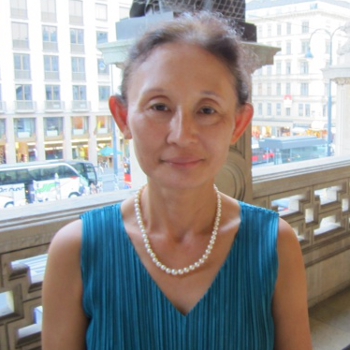The best vocal performance of Verdi’s tragic opera of the Parisian courtesan Violetta in my experience was one of Anja Harteros’ last appearances at the Metropolitan Opera. Harteros has since moved onto more dramatic Verdi roles. Another German soprano is now making Violetta as her signature role – Diana Damrau courageously sang her first Violetta at the Met last season and, following appearances in Milan, London and Paris, has now made a widely anticipated role debut in Munich. It was a vocally spectacular performance, yet the simple and elegant but static production failed to support her multi-dimensional characterization.
Unfortunately her Alfredo, Joseph Calleja, cancelled due to illness, and was replaced by Mexican tenor Arturo Chacon-Cruz, who flew in from Vienna, where he is singing the role at Theater an der Wien. He possesses a pleasing if not slender voice, and was more than adequate, gaining confidence as the opera went on. Simon Keenlyside, who seemed overparted as Macbeth here a few days earlier, excelled as Germont père. While he sometimes seemed unable to sustain Verdi’s legato lines fully, his voice showed a variety of colours to create a sympathetic if not a domineering figure. The second act duet between Damrau and Keenlyside was one of the vocal highlights of the performance.
The role of Violetta is said to require at least two if not three different soprano voices; coloratura, lyric and spinto. Damrau is capable of navigating from one stye to another effortlessly and smoothly, to express the character’s progression from the toast of Paris, to a woman in love, and finally to a broken and dying soul. Her “Sempre libera” was truly show stopping, with florid and breathtaking coloratura, and her last high note came out with such heart aching emotional power that she brought down the house. Her vocal acting throughout was superb, as her dramatic and declamatory notes would quickly be followed by soft pianissimo singing. Only in Act III did her portrayal seem less than complete as her voice remained too vibrant and powerful for a dying woman. One would also have wished for a little more nuance in her repetition of “rinasce”, and a more vulnerable performance.
Conductor Paolo Carignani mostly kept the proceedings under control, although there were slight coordination issues at times. The orchestra sounded at once vibrant, dynamic and sensitive; the strings played exceptionally well in the Act III prelude. The chorus members were mostly confined in several rows in the front of the stage, both during the first and second act party scenes, almost like a Greek chorus providing commentary to the proceedings.
Günter Krämer's production is at least several years old, and places the action in the 1930s judging from the women’s costumes. As the prelude begins, we see shadowy figures of men in formal attire surrounding a young girl clad in white. Violetta appears with her back towards the audience as her younger self exits and the party scene begins. Violetta’s world is symbolized by a low black wall with several closed doors initially, suggesting her trapped existence with no way out. In the second act, the door/wall is pushed to the side of the stage to reveal an open garden with scattered leaves, a swing, a Japanese parasol and a few chairs. The director unfortunately takes the liberty of inserting the non-speaking character of Alfredo’s sister on stage during the Violetta/Germont confrontation scene, and the girl’s presence is sometimes distracting to the musical drama unfolding. One does not need a visual reminder of the reason for Violetta’s sacrifice.
Act III begins with Violetta on the floor on simple bedding; her world is now separated from her former worlds of parties and domestic bliss, as symbolized by a large chandelier from the party scene and garden chairs lying in the back, by a transparent wall with an opening, through which the maid Annina, the doctor, Alfredo and Giorgio Germont approach her. It is also through this opening that Violetta walks towards the light in the back upon her death. The arrangement creates some awkward moments in her death scene, as she is not surrounded by her loved ones (they are shadows behind the partition) but is alone as she sings to Alfredo to preserve her memory as he moves on. I have witnessed a couple of other recent productions of La traviata that emphasize Violetta’s complete isolation by having her stand or sit by herself as she sings her death scene. She is truly alone in the desert of Paris.




